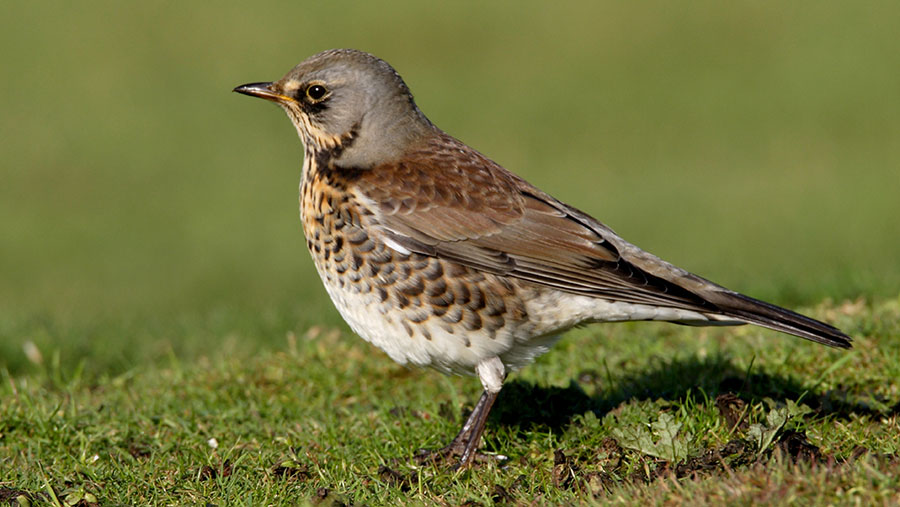Farmers spot threatened species in annual bird count
 © Neil Bowman/FLPA/imageBROKER/REX/Shutterstock
© Neil Bowman/FLPA/imageBROKER/REX/Shutterstock Farmers recorded a total of 112 species in this year’s Big Farmland Bird Count (BFBC), including 22 on the list of “threatened” farmland birds.
In the fourth annual count, organised by the Game and Wildlife Conservation Trust (GWCT), 975 farmers recorded 240,000 birds across 316,996ha.
Conservation concern
Eight species on the Red List for Birds of Conservation Concern, including fieldfare, starling, house sparrow, song thrush and yellowhammer, were among the 25 most abundant birds spotted during the 2017 count.
See also: Farmers spot 130 species on Big Farmland Bird Count
The most abundant of these, fieldfares and starlings, were seen on more than 40% of farms. Blackbirds and woodpigeons were the most commonly spotted species, seen by more than 80% of participants.
‘Farmer science’
NFU vice-president Guy Smith said: “It’s great to see, through the GWCT’s Big Farmland Bird Count a good bit of ‘farmer science’ where the people who know farms best – that being the farmers themselves – report back on the birdlife on their farms in a structured way.
“Having taken part in it myself it’s an hour well spent. And it’s great to see the results showing a good response and a wide variety of bird species.”
The GWCT organises the count annually as a simple means of recording the effect of any farmer-led conservation schemes, such as supplementary feeding or growing wild bird seed crops and game cover crops.
Agri-environment schemes
This year 56% of participants were in some form of agri-environment scheme, and 38% of participants in the count provide some form of extra seed feed for birds.
The average farm size of those taking part was 388ha, with more than 65% growing arable crops, nearly 50% having beef or sheep, and nearly 15% growing field vegetables.
There were also a number of dairy farms, horticulture units, poultry producers and pig producers submitting counts.
Suffolk, Norfolk and Herefordshire had the most farmers taking part, but counts were submitted from every county in England. Responses were also received from Northern Ireland, Scotland and Wales.
GWCT hopes more than 1,000 will take part in the fifth BFBC, which will take place in February 2018.
Big Farmland Bird Count 2017 in numbers
- 104,993 woodpigeons, starlings, fieldfares, rooks and chaffinches were seen – the five most abundant birds
- 112 species and 22 “red-listed” species were counted across the UK
- Five “at-risk” species appeared in the 25 most commonly seen species list – fieldfares, starlings, house sparrows, song thrushes and yellowhammers
- Almost 60% of participants are in some form of agri-environment scheme
